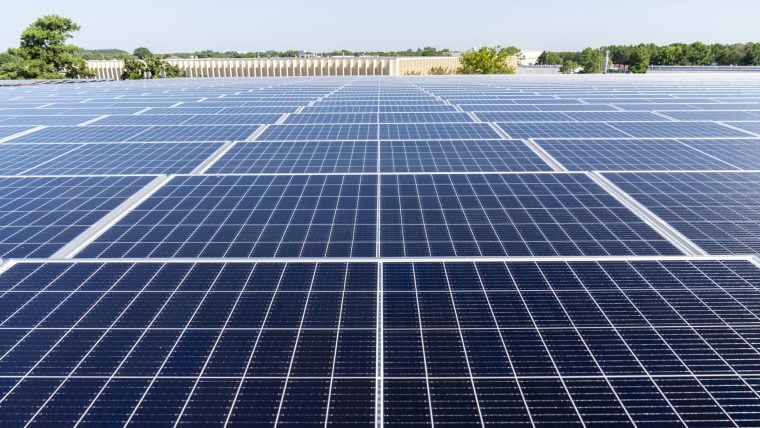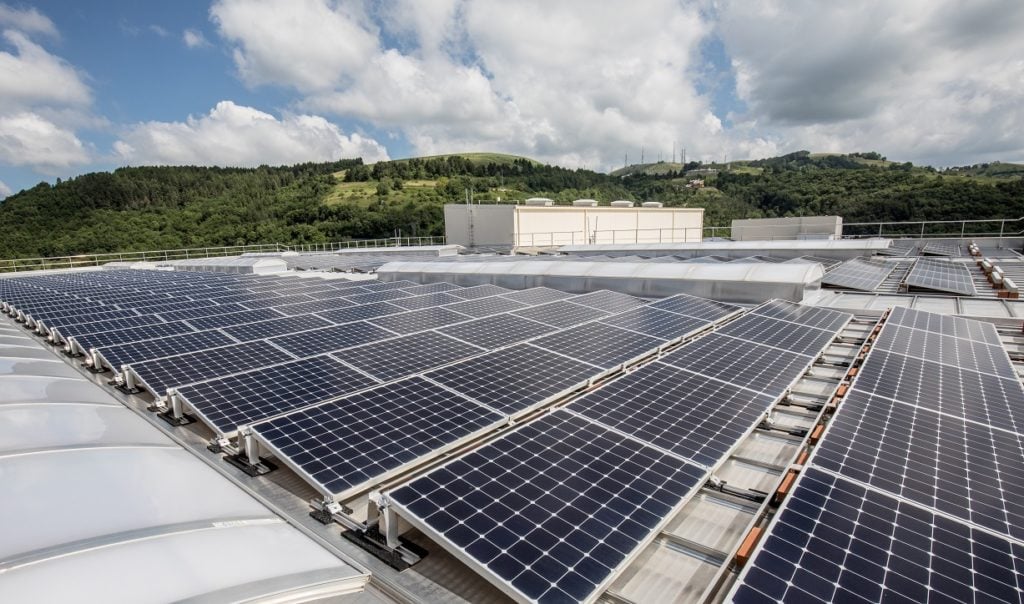5 Tips To Maximize Solar Panel Efficiency In Low Light Conditions
Factors and Challenges
For this project, the selection of solar panels with high efficiency in converting sunlight into electricity is a crucial consideration. As a result, the optimal choice of panels would be those low-light performance ones, which typically vary between 15% and 22%. As such, these characteristics guarantee that the panels continue to generate energy even in dim conditions .Optimal orientation and tilt
The proper orientation and tilt of panels should be another factor to consider to get the most sunlight exposure. The adjustment of the tilt angle towards the sun path can notably enhance energy output in regions with low-light intensity. For example, in northern latitudes, one can determine a proper angle by drawing a perpendicular line through the latitude and adding 15 degrees more .Dust and debris accumulation
An essential precaution to be taken to mitigate the effects of dust and debris accumulation is cleaning the panels on a regular basis. The relevant research suggests that even a thin layer of dirt can reduce the efficiency of panels by 5% . Therefore, to ensure the panels operate to their full capacity, it could be efficient to either install an automated cleaning system or set a schedule for cleanings.
Temperature management
Another critical factor adversely affecting the efficiency of solar panels is the frequent fluctuation of temperatures. As a matter of fact, a high level of temperature can lead to a significant reduction in the performance of panels since a 1°C increase makes the output drop by 0.5%. Accordingly, the integration of some cooling mechanism, such as air ventilation or water circulation, ensuring that panels do not get too warm in dim conditions, would be the top consideration of this project.
Storage solution
The final factor for ensuring high efficiency of solar panels in dark condition is an energy storage solution. For instance, in the period of maximum sunlight exposure, the panels would be producing more energy than the house needs . Therefore, without a proper storage solution, the excess would be wasted. At the same time, an investment into battery storage systems allows storing excess-energy production for nighttime or low-light consumption.

Angle and Direction Strategies
Solar panel tilt optimization should take into account the angle of exposure to the sun. The efficiency of generation in low-intensity light regions can be significantly increased if implemented correctly. For instance, the optimal angles of inclination of solar panels in the United States are between 15 and 40 degrees, depending on the latitude . The best way to adjust panel orientation so that they are turned into sunlight along the path, by using a solar path.
Orientation towards Solar Path
Properly directing solar panels towards the solar path allows exposure to the sunlight during the day. In the Northern region, the optimal orientation will be to the south. In the equatorial regions, the panels can be turned slightly east or west to evenly disperse energy throughout the day. One study shows that deviation from the south by no more than 20 degrees can increase energy intensity by up to 5% .
Utilizing Tracking Systems
Employing tracking systems can further enhance the functionality of solar panels. Single-axis trackers move panels along one axis, typically from east to west . A two-winged tracking system, in turn, moves the surface in a vertical position and from south to east. It can increase the energy intensity of a system from 20 to 40%. With tracking instruments, there is a 10% increase in exposure to low-intensity light systems
Shading Analysis
The results of shading analysis demonstrate that poor exposure of the solar panels can lead to significant differences in energy production . Trees, buildings, and other structures are the most frequent causes of such issues. SunEye and Solar Pathfinder tools have been used to identify shading durations or reduce the impact of neighboring trees or other obstacles.
Microinverter Installation
Compared to centralized systems, microinverters, which enable energy generation separately for each solar panel, have advantages. Energy efficiency is increased by 5-25%, particularly in low-intensity light conditions
Low Light Environment Technology
One key way to enhance solar panel performance in low light conditions is to develop and use efficient photovoltaic materials. Perovskite-based solar cells and other emgerging technologies have become a hot topic of research in recent years with light to energy conversion efficiencies exceeding 25% under indoor lighting scenarios where silicon solar cells become totally incapable of energy utilization due to the high resistivity of silicon . Light concentration systems
Concentration of sunlight can be employed to improve energy capture in low light conditions indoors and outdoors. Concentrated photovoltaic technology, which uses lenses or mirrors to concentrate sunlight onto small high efficiency solar cells, can achieve efficiency levels greater than 40% .
Bifacial solar panels
Bifacial solar panels are versatile in that they can capture sunlight from both the front and rear of the panel. They are able to utilize reflected and diffused light from a variety of surrounding surfaces to add energy to total panel output and data indicates that their energy output is 15% higher than single-sided monofacial panels making them optimal for diffuse light conditions .
Transparent Solar Technologies
There have also emerged transparent solar technologies that provide dual functionality in the sense that they generate electricity while allowing light to pass through thus enabling them to be incorporated into building materials or windows . These are typically transparent solar cells made from organic photovoltaic materials or transparent conductive oxides that harvest light across a wide range of spectrum including indoor and low light. Energy harvesting from ambient light
Keep Panels Clean and Efficient
Maintaining a regular cleaning schedule is crucial for ensuring maximum solar panel efficiency. Depending on the specific conditions of the environment, solar panels should be cleaned every 1 to 3 months to remove dirt, dust, pollen, and other debris from their surface . Additionally, timing also depends on the number of particles that have accumulated on the panel, which should be visually assessed during cleaning. Regular cleaning allows for maximum penetration of light and, accordingly, the optimal generation of energy.
Use of Proper Cleaning Methods
Correct method and adequate gear are the significant factors to consider when cleaning solar panels to avoid their damage. Soft brushes, squeegees, and non-abrasive cleaning materials are the recommended procurement to facilitate the process speed and gently remove filth and grease . Using rough gear and materials and high-pressure water may lead to formation of micro-scratches and theoretically decrease cell efficiency over time.
Consideration of Environmental Factors
Location and environmental properties of the area, weather, and vegetation all impact the general frequency and intensity of solar panel cleaning . Areas with a high level of pollution, pollen content, and bird activity might require the most frequent sweeping. It is also important to consider that in regions with particular weather and climatic patterns, cleaning not be as required due to the self-cleaning properties of the weather . Rainfall might provide all the necessary cleaning procedures and thus reduce the needed frequency of maintenance.
Monitoring System Performance
Implementing a system that would allow for tracking the changes in solar panel performance would also allow for identifying dirt as a possible source of degradation. Key factors of basic performance that can be measured without advanced equipment are power output, voltage, and current . Using advanced monitoring systems, it is possible to obtain full-time data and regular notifications of sudden drops in panel efficiency.

Enhance Solar Output with Storage and Backup
By integrating storage systems such as lithium-ion batteries with a newly installed or existing solar PV system, the use and reliability of solar energy can be enhanced. Therefore, the excess energy consumed by solar PV during the peak sunlight hours a day can be stored in a battery to provide power back to the load during low light or at night . Various studies have shown that self-consumption using energy storage can reach up to 80% utilizing the solar power without overloading or undercharging to the grid . Thus, without a storage system, the solar PV still connected to the batteries cannot produce beyond the electric load demand.
Sizing the capacity of energy storage
To size the storage capacity, the average power that an average household consumes is considered, which can vary from capacity to capacity. So, suppose the average household uses 500 watts of power in an hour and 12kWh for a day/24 hours. Assuming that the solar panel connected to the battery produces 350 watts of electrical power per day, the battery and charger efficiency of 90%, from which the storage capacity can be sized from 5-kWh to 10-kWh. Moreover, the 100-kWh storage size is also available for industrial uses for the mill and other national grid facilities. Accordingly, the different sizes from 5-kWh to 10-kWh can provide short-duration backup for an average home.
Implementation
With the available battery capacity, a DSM priority program has been designed to allow the load to operate within the period under charge . The demand-side management strategies or programs can control and encourage the home’s electricity consumption in the best possible way. These programs can shift the load from the electricity storage media when over-consumption is seen, and the battery becomes too hot or overcharged; otherwise, the load can be operated through the solar PV panel. Therefore, by disconnecting from the load and when it is observed that the load is not in use through an LDR, the demand side is connected to a photo-sensing switch to charge the battery, while the load continues to operate from the solar PV . The load connects through different strategies, such as time-of-use pricing, home area network , Zigbee, radio frequency wavs and cellular mobiles , based on feasible demand response strategies up to that specific boundary level.